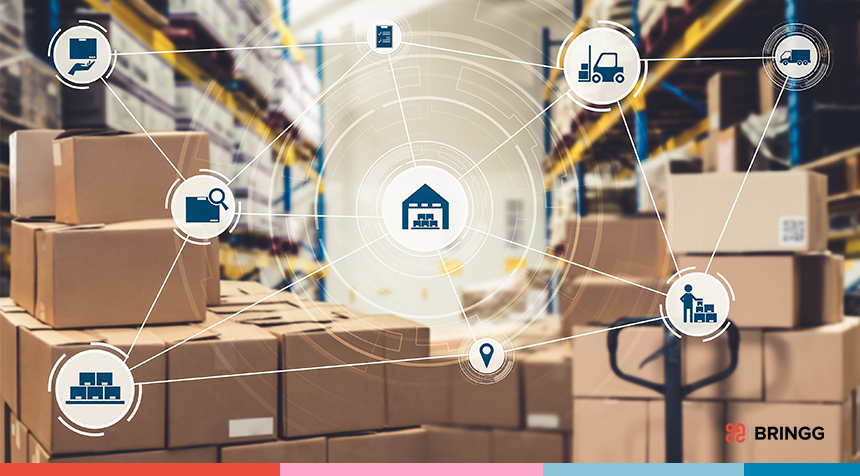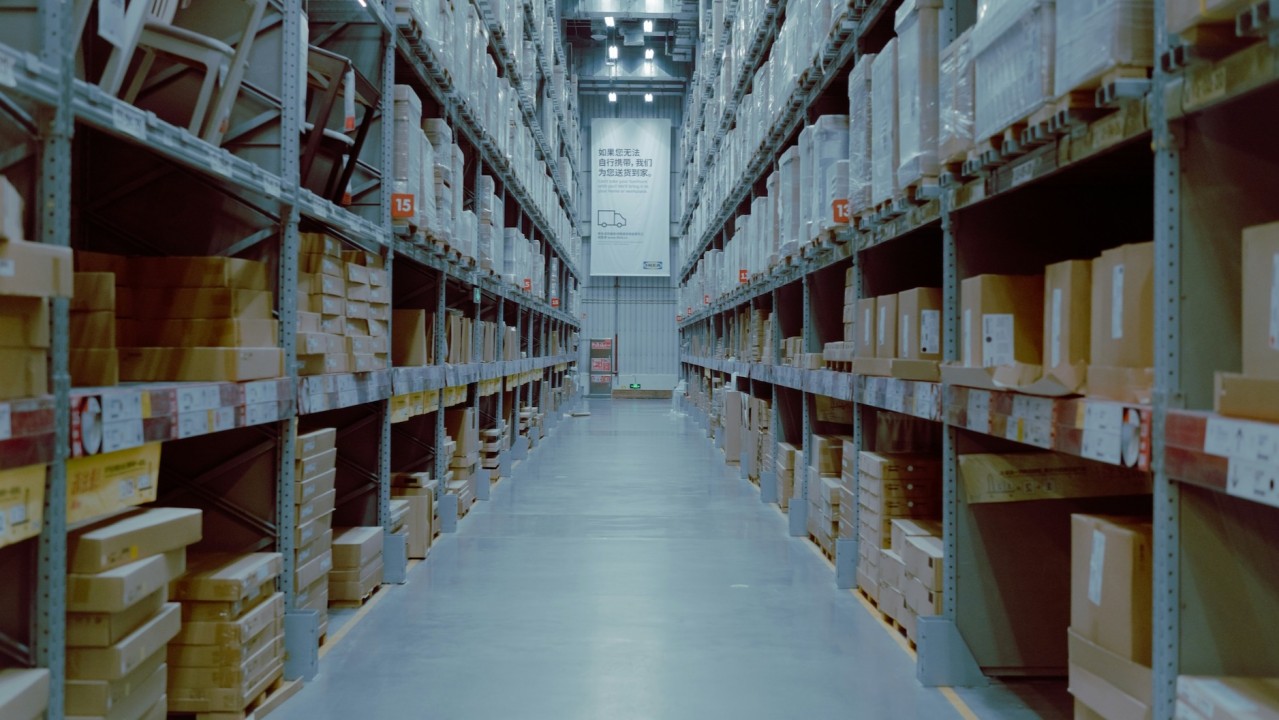AI and machine learning technologies are revolutionizing the last mile for grocery and white glove delivery services—improving efficiency, accuracy, and customer satisfaction. These technological advancements will shape the future of a booming last mile delivery sector, which is expected to grow to more than $200 billion by 2027 in the US alone.
In this article, we look at the key ways AI and machine learning are already shaping last mile grocery and white-glove delivery. Plus, we examine how Bringg uses these technologies and consider the future trends that are set to define the industry.
Optimizing last mile delivery with AI and machine learning
Let’s take a closer look at how AI and machine learning (ML) are offering strategic opportunities for improving the last mile delivery experience.
Route optimization
AI algorithms analyze factors such as traffic patterns, delivery locations, and vehicle capacity to optimize delivery routes. This allows for dynamic route scheduling that takes into account travel time, fuel consumption, and vehicle wear and tear—ultimately leading to cost savings and an improved customer experience.
At Bringg, we’ve implemented ML for predicting Time Onsite more accurately and, for one client, this was able to improve On Time In Full (OTIF) by over 6% during the course of 6 months.
Predictive analytics
By analyzing historical data, weather patterns, and events, and implementing ML techniques, AI can predict future demand and delivery times, thereby increasing customer satisfaction. DHL’s Logistics Trend Radar reports that predictive analytics can improve delivery efficiency by up to 20%.
Customer experience
AI-powered chatbots and customer service platforms provide real-time updates to customers about their delivery. This allows customers to send in queries, receive ETAs, and initiate returns. Having chatbots handle WISMO enquiries at scale reduces stress on the customer service team and call centers, leading to greater cost savings.
Inventory management
AI algorithms can help businesses maintain optimal stock levels by analyzing demand patterns, seasonal trends, and market fluctuations.
Reporting and strategy
ML and AI-analyzed data can help businesses better understand their customer base, allowing for strategic decision-making to improve customer retention, satisfaction, and business growth.
Quality control and compliance
AI and ML algorithms are being used to monitor the quality of delivered goods and ensure compliance with regulations and standards. These systems can detect anomalies, identify potential risks, and take corrective actions in real time to prevent delivery errors and safety hazards.
How Bringg uses AI and ML to enhance last mile delivery
Bringg has conducted several pilot programs utilizing AI and ML. Recently, it has integrated ML algorithms into its product offerings, specifically for Estimated Time On Site (ETOS) calculations. This integration is particularly beneficial for grocery and white glove services that rely on timely ETOS notifications for customer satisfaction and waste reduction.
The implementation of ML for ETOS calculations has far-reaching effects on last mile delivery operations. One significant outcome is the unlocking of additional capacity within the fleet. With precise estimations of the time needed for each delivery, companies can optimize their resources more effectively, leading to improved asset utilization.
This optimization translates into tangible benefits that reduce idle time for vehicles and drivers, ultimately maximizing the efficiency of the entire delivery network.
The integration of ML into ETOS calculations contributes to achieving On Time, In Full (OTIF) delivery targets. By accurately predicting arrival times and service durations, Bringg’s solution helps ensure deliveries are complete and arrive according to schedule.
This reduction in late deliveries not only enhances operational reliability but also has a direct positive impact on customer satisfaction. Customers receive their orders promptly and in full, leading to a more positive overall delivery experience.
Bringg has also integrated AI to manage its internal knowledge base. This implementation has led to notable improvements in support accuracy and response times. Looking ahead, Bringg plans to extend this AI-driven capability to users by including a chatbot service that will resolve issues and queries even faster.
Future of AI and ML in last mile delivery
As technological advancements continue to develop and become readily available, the delivery and logistics industry will change drastically in the coming years. Let’s explore some important trends.
Automation and robotics
AI-powered robots and drones are already being used for last mile delivery in urban areas and remote locations. These autonomous vehicles can navigate through traffic, deliver packages to customers’ doorsteps, and even perform tasks such as inventory management and shelf restocking.
Research suggests that the use of AI-driven robotics is expected to grow exponentially, increasingly prompted by the logistics and e-commerce industries.
Predictive maintenance
AI-powered predictive maintenance systems will become more prevalent in delivery fleets. These systems will analyze vehicle data in real time to predict potential equipment failures and schedule maintenance, minimizing downtime and optimizing fleet efficiency.
Augmented and virtual reality (AR/VR)
AR and VR technologies will be integrated into last mile delivery processes to enhance efficiency and accuracy. For example, delivery drivers could use AR glasses to visualize optimal delivery routes, access real-time inventory information, and interact with virtual assistants for guidance.
Blockchain integration
AI-powered blockchain platforms will enable end-to-end visibility of delivery processes, secure digital transactions, and ensure the authenticity of delivered goods.
Robotic process automation (RPA)
RPA technologies can automate repetitive tasks, such as data entry, order processing, and invoice generation. This will free up human resources to focus on more strategic tasks, improve accuracy, and reduce processing times.
Summary
AI and ML technologies are transforming grocery and white-glove last mile delivery services through route optimization, predictive analytics, customer experience management, inventory management, reporting, and quality control.
Bringg’s implementation of ML for ETOS calculations has improved delivery accuracy, asset utilization, and OTIF delivery performance, leading to enhanced efficiency, accuracy, delivery capacity, and customer satisfaction.
AI and ML applications are increasingly widespread and, as these technologies continue to evolve, we can expect further advancements in delivery operations and logistics management. AI and ML are poised to drive efficiency, innovation, and growth.



